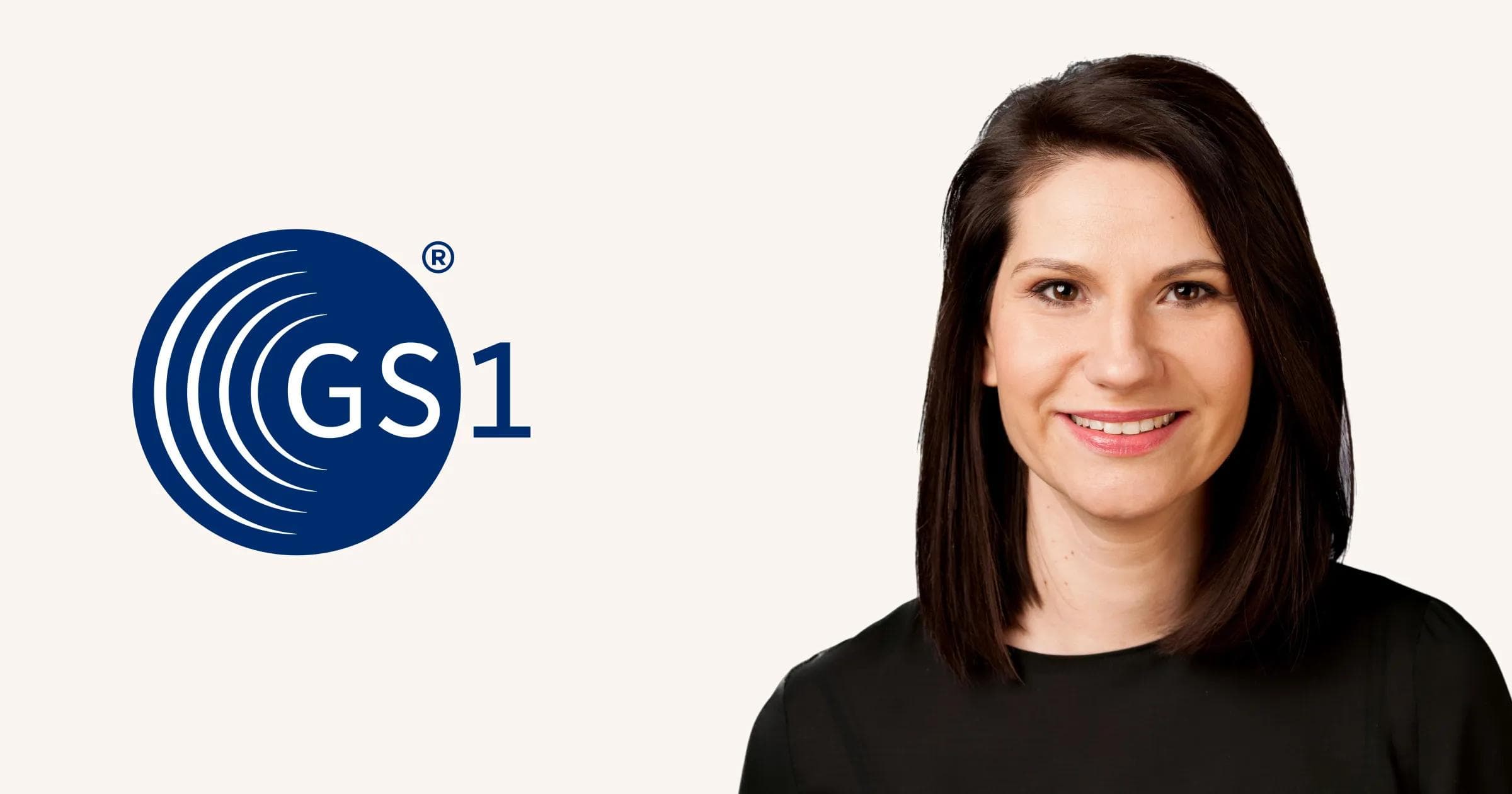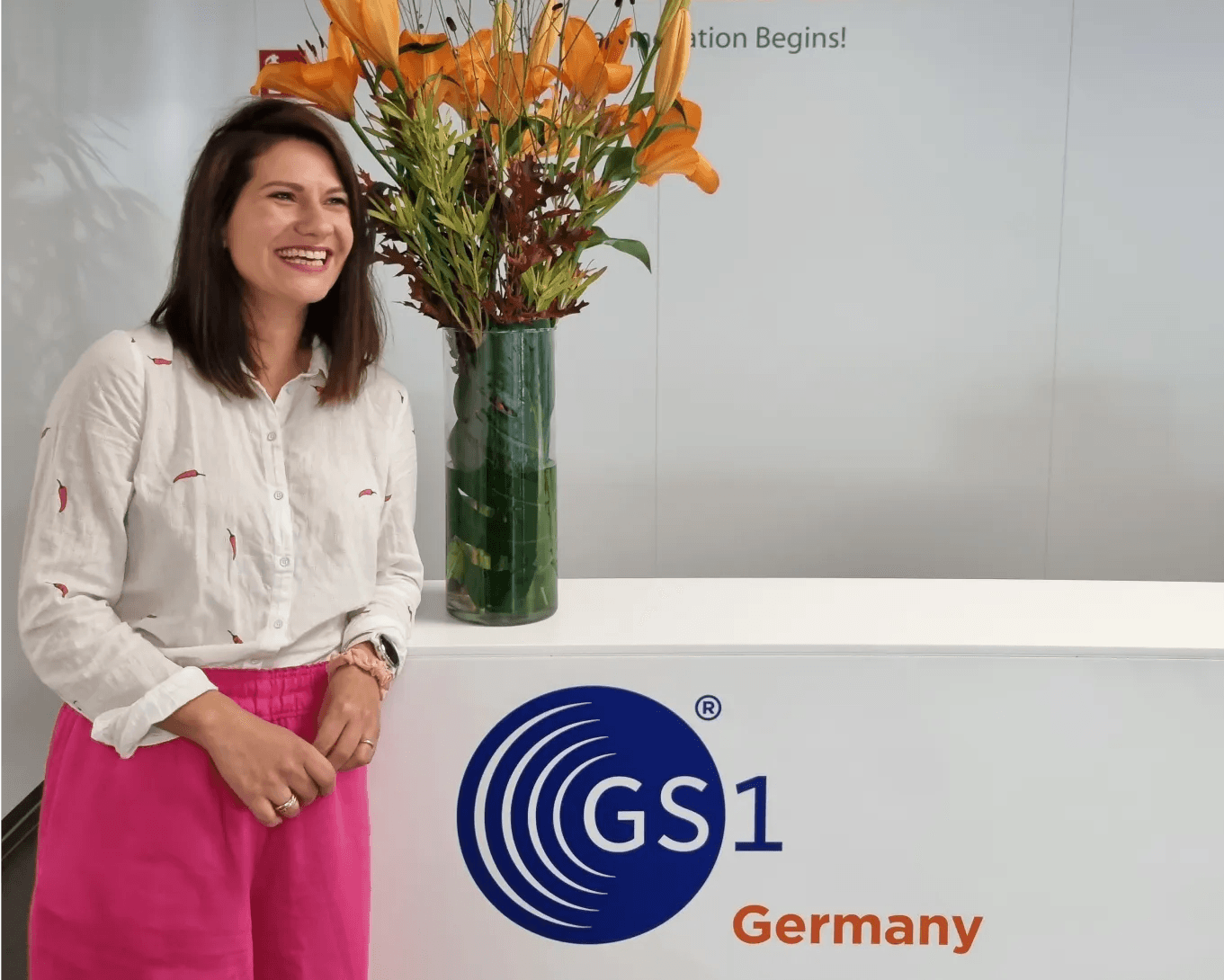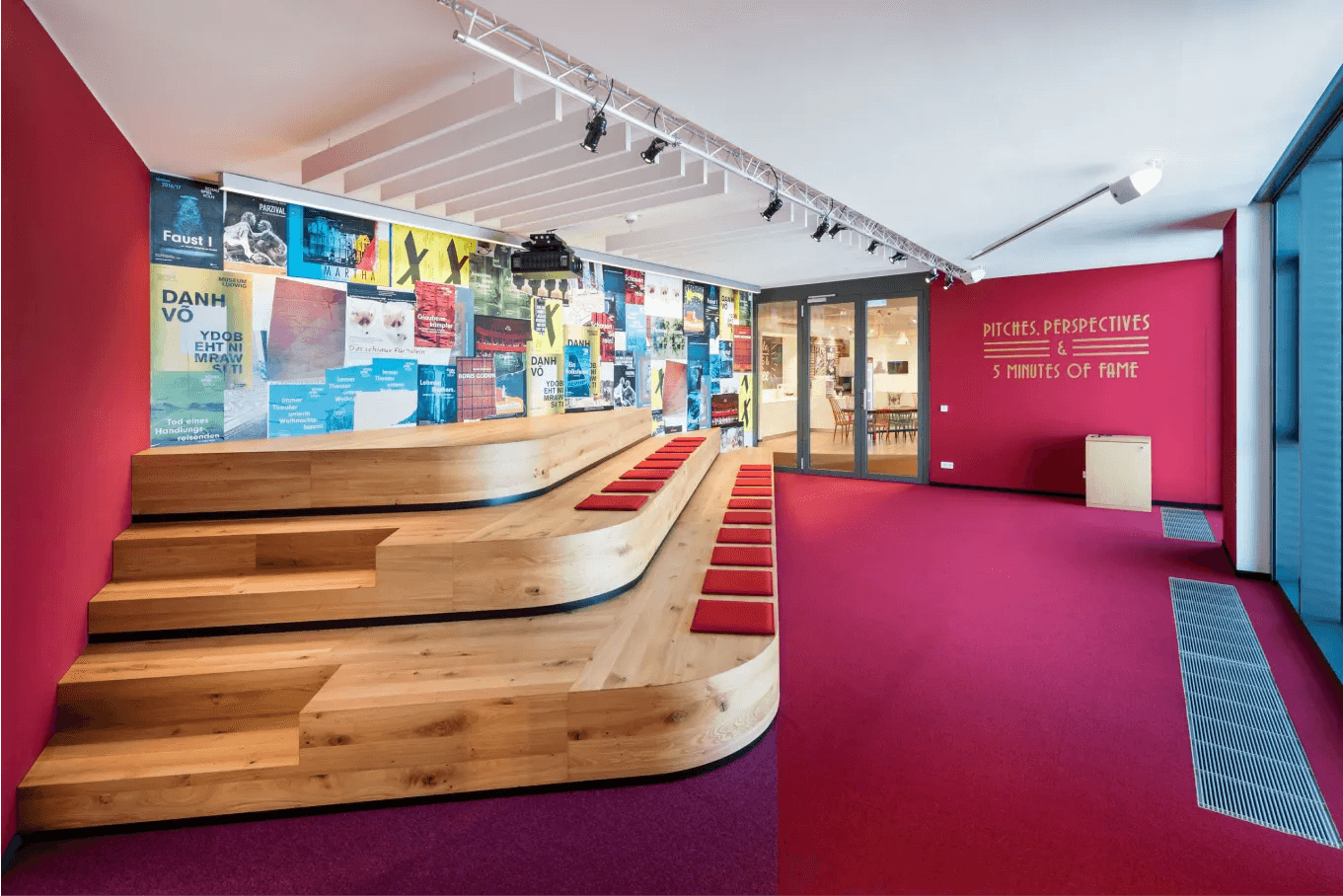GS1's strategic compass: Navigating change with Mooncamp

About GS1 Germany
GS1 Barcodes are scanned over six billion times daily and are a universal standard in global trade. GS1's 24 standards across over 20 industries are the global language for efficient and secure business processes, valid across company borders and continents.
GS1 operates as a global network, encompassing around 115 GS1 organizations, serving over 90,000 customers in Germany alone with its products and has been active for companies worldwide for more than 45 years.
Talking to Elena Riedel, GS1 Germany

Elena, please introduce yourself. What is your role?
As an OKR coach, I accompany the teams in the introduction and implementation of the method, supporting them in formulating clear Objectives and Key Results.
I also moderate various OKR formats such as plannings and retrospectives. As an OKR coach, I not only provide practical guidance but also contribute to making the entire process appealing and motivating, to fully exploit the potential of the OKR method in the organization. Thus, I support the anchoring of the OKR methodology in the corporate culture and act as a change agent for cultural change.
Challenge
Please explain how you came to introduce OKRs. What challenges did you face?
In an increasingly volatile, uncertain, complex and ambivalent world, we, like many other companies, are confronted with a multitude of issues – be it on an operational or strategic level. The challenge was to focus on those strategic issues that are truly critical. It was also important for us to choose a method for operationalizing our strategy that would enable clear measurability.
At this point, we came across the OKR agile methodology, which seemed to offer all the solutions we were looking for – clear alignment, measurable results, and a strong focus on our customers' needs. With that in mind, we took the plunge and started the OKR process.
What issues or challenges led you to decide to implement OKR software?
We were aware from the beginning that the right software was essential for successful work with OKR. To avoid complex Excel spreadsheet spaghetti, our digitization team addressed this concern and ultimately made the decision to go with Mooncamp.
Solution and implementation

What possible solutions did you consider? Did you compare alternative solutions?
When selecting a suitable tool, we made a thorough consideration and looked at various solution options. These included SaaS applications, Jira extensions, as well as Microsoft Excel, which we compared.
How did you hear about Mooncamp?
During our intensive research for a suitable tool, we came across Mooncamp. This tool caught our attention and attracted our particular interest because it offers a streamlined and easy-to-understand software that at the same time includes a wide range of comprehensive features.
What were your criteria for choosing Mooncamp? What was the main reason why you chose Mooncamp?
Before our research for a suitable OKR tool, we first defined our main requirements. These criteria were carefully evaluated and prioritized to ensure that the selected tool met our needs. The following criteria were deemed particularly important:
- Transparency:
- Visualization of the impact of our OKRs on higher-level goals.
- The ability for any employee to view all OKRs and their progress.
- Collaboration capability: Ensuring smooth collaboration between employees and teams without any disruptions through tool-switching.
- User Experience / Usability: A low-barrier entry for all user:s and an easy-to-understand handling of the application.
- Reminder function: The possibility of regular reminders to always make sure the OKR set is up to date.
- GDPR compliance: Compliance with the General Data Protection Regulation (GDPR) was a key factor.
- Automatic and visual representation of progress: The automatic update of the progress of Key Results in the implementation and completion of tasks, which is transmitted to all levels.
- Integration (Microsoft Teams, Jira): The ability to seamlessly integrate the tool with tools already established in the organization such as Microsoft Teams and Jira.
- Price/Performance: A reasonable price/performance ratio.
- Reporting: The ability to produce automated reports, especially at the end of an OKR cycle.
- Setup: The effort and preparation required before the tool can be used to its fullest potential.
In a next step, we weighted these criteria according to our company's needs and priorities and evaluated the various applications using a utility analysis. In the process, Mooncamp proved to be particularly outstanding in the areas of user experience and integration. The application is characterized by an easy-to-understand user interface and intuitive use, which keeps the barrier to entry low. It also integrated seamlessly with Microsoft Teams, an application that is already used daily throughout the company.
GDPR compliance was another important aspect that influenced the decision in favor of Mooncamp.
Feel free to chat a bit about your process. Is your OKR process already running perfectly or are there things you're continuing to optimize?
Where does it ever run perfectly? In each cycle, we continuously gain new knowledge and shape our own approach to implementing OKR in the company under the motto "do-learn-develop". In doing so, we make sure that OKR fits us and that we do not act rigidly according to traditional OKR principles. It is an ongoing process in which it is inevitable to make occasional mistakes and go through learning loops. Nevertheless, this dynamic leads to the emergence of something new, which ultimately moves us all forward.

How have the employees adopted Mooncamp? Do you have a secret tip for successful integration into the daily work routine?
The introduction of Mooncamp to colleagues new to the OKR journey happens in roughly three phases:
- Euphoria: In the beginning, there is a certain euphoria about the fact that we are using a special OKR tool. The employees are very curious and open-minded.
- Adjustment phase: After the initial enthusiasm, we have noticed that some employees go through a small adjustment phase, as they are initially unsure where to start when entering their OKR set. However, this phase is a natural part of the learning process and allows teams to take full advantage of Mooncamp's comprehensive and flexible features.
- Routine: After employees become familiar with the tool, a certain routine occurs over time. They continuously update their OKR sets and use Mooncamp for regular updates in their OKR Weekly meetings. This encourages interaction between team members as they share their progress with each other.
Mooncamp also plays a central role in our OKR Coaches Weekly meetings, where we as coaches look at the OKR sets and progress together. This allows us to identify challenges, give each other valuable advice, and support each other.
However, many people are certainly already aware of one secret tip for successfully integrating such tools into everyday work: practice, practice and continuous application are crucial, as with so many things in life. After all, creating a routine and integrating it into everyday life is key to the long-term use and success of such tools in the organization. Ongoing communication and support during the implementation phase are also critical. In addition, it is important to highlight the benefits and added value of the tool for teamwork.
How were your employees prepared in advance for the use of Mooncamp?
Mooncamp is characterized by its exceptional user-friendliness and intuitive handling. Therefore, we encourage our colleagues to first familiarize themselves with it on their own and, of course, point them to the available video tutorials. As mentioned earlier, we integrate the use of Mooncamp into our daily work relatively quickly, as everyone updates their progress there.
In our teams there are colleagues with different levels of OKR expertise and experience in using Mooncamp. This creates an atmosphere where everyone helps and supports each other. In addition, our coach is always available to provide advice and assistance to ensure that our OKR journey runs smoothly.
Results
How has Mooncamp impacted the overall success or success of your team?
Mooncamp is proving to be an extremely useful tool for visualizing OKR sets. Thanks to its automatic status update feature, the tool allows you to easily check using color coding (green, yellow, and red) to see the progress of issues in positive, ongoing, or delayed status. If desired, one can also manually adjust the status. Company-wide visibility allows for quick identification of progress and delays, which in turn helps direct company resources in a more focused manner and encourages mutual support autonomously.
How does your OKR process benefit from Mooncamp?
The measurability and tracking of progress within the OKR methodology is undoubtedly a huge benefit. When you update your OKR sets and move the progress slider to the right, it creates an incredibly positive feeling. At the same time, this progress is transparently displayed for the entire organization.
This transparency and the visual representation of progress can significantly increase the motivation and satisfaction of employees. It creates a sense of fulfillment and clearly shows how individual efforts contribute to the achievement of common company goals.
For our company, we can clearly state that the transparency of the method, especially in combination with the use of the supporting tool, has already led to a significantly increased commitment to the strategic corporate goals. The ambitious goals encourage our employees to continuously improve their performance, drive initiatives, grow as a team, and achieve the company's goals. Without a proper tool like Mooncamp, this would be significantly more time-consuming and would also likely affect the overall adoption of the OKR methodology.
Conclusion
The introduction and implementation of Mooncamp at GS1 Germany went through various phases, from initial euphoria to an adjustment phase to the establishment of a routine. The challenges GS1 faced, especially in terms of focusing on strategic issues and operationalizing their strategy, found a solution in the OKR method and Mooncamp in particular, which prioritizes transparency, collaboration and clear measurability.
Mooncamp has proven to be not only intuitive and user-friendly, but also a tool that effectively supports the visualization and measurability of OKRs. The platform has fostered transparency and collaboration across the organization and plays a central role in GS1's OKR processes by providing a clear view of progress and challenges, helping to effectively direct resources and sharpen the organization's strategic direction.
GS1's experience with Mooncamp underscores the importance of transparency, measurable results and fostering a collaborative work culture in today's business environment. With a clear vision and consistent use of an effective tool like Mooncamp, GS1 has demonstrated a proactive approach to addressing challenges and driving strategic growth.
